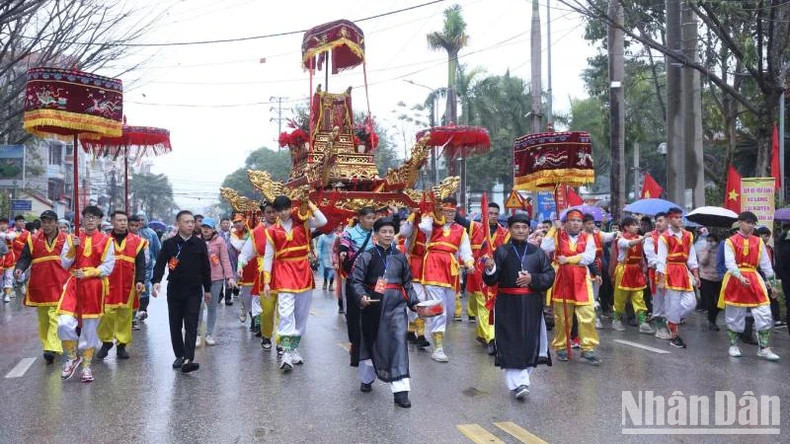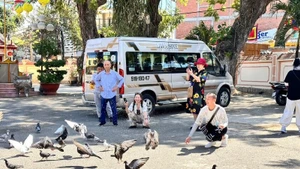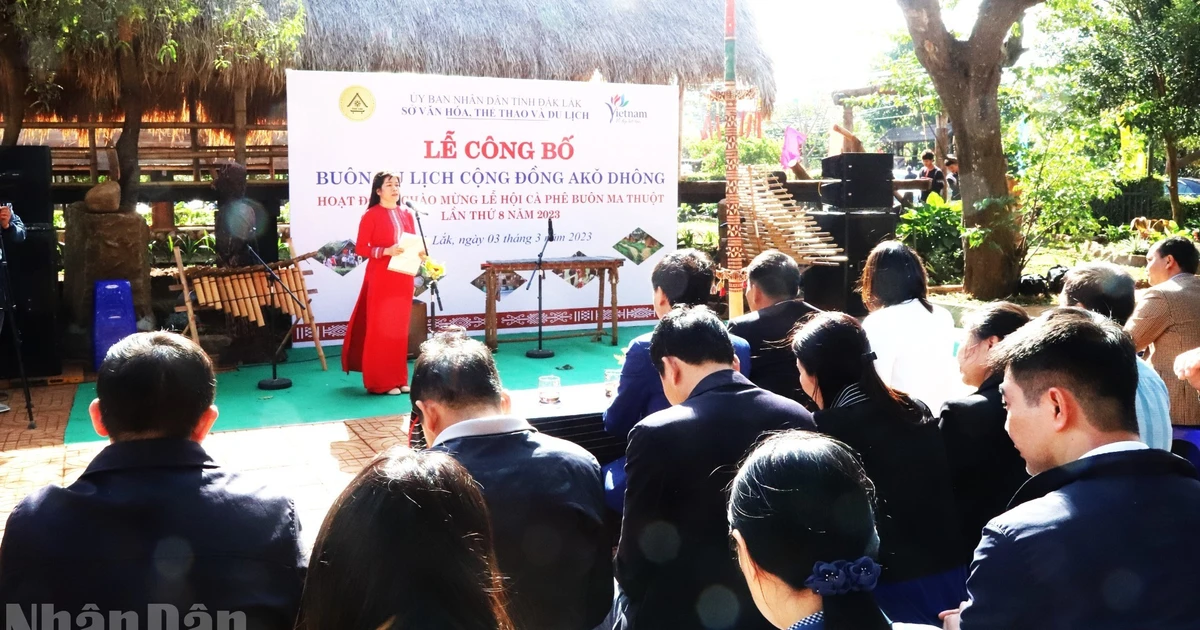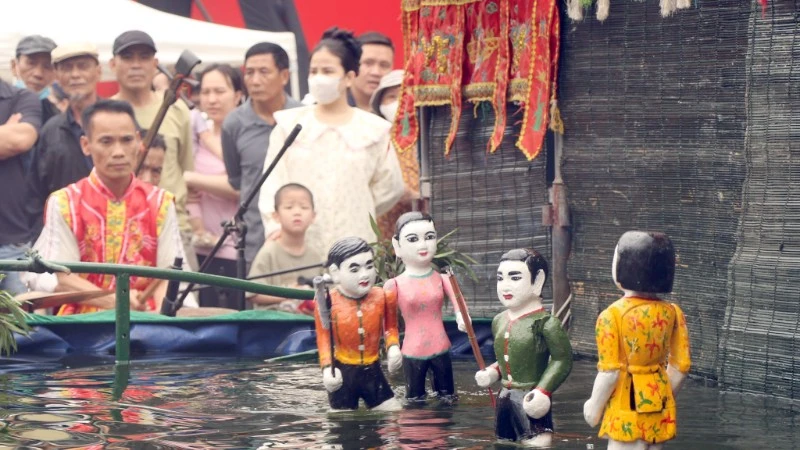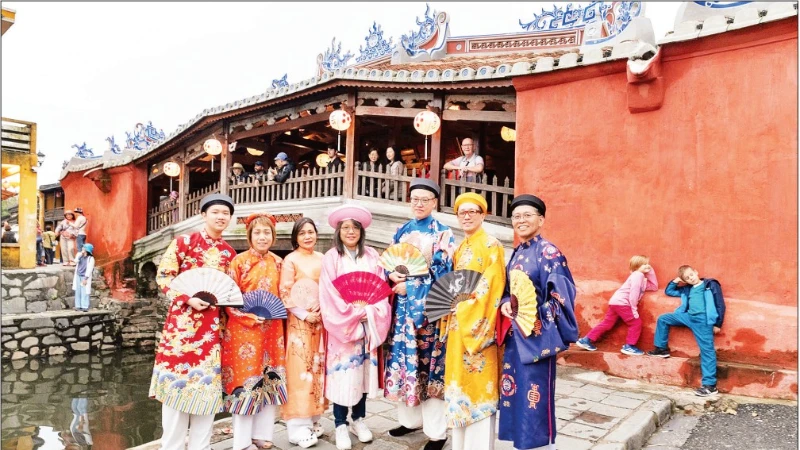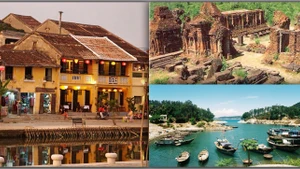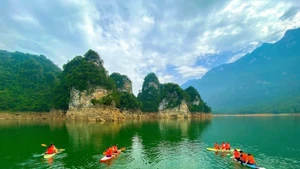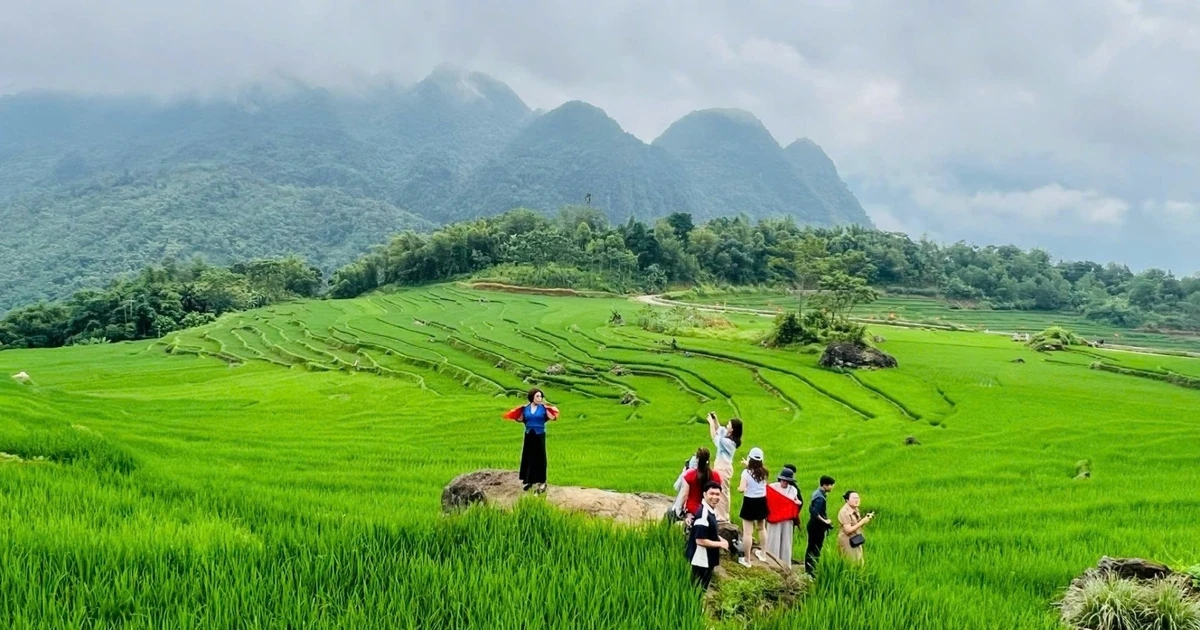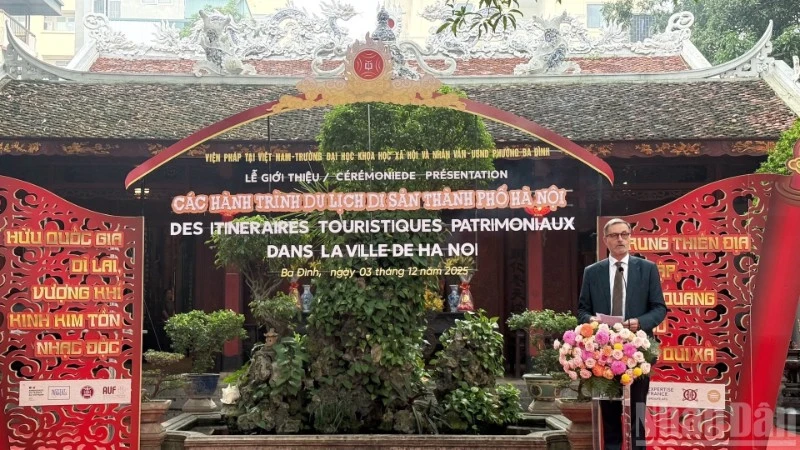The festival is held annually from the 22nd to the 27th day of the first lunar month, with various activities including a palanquin procession, lion dances, folk games, and art performances.
Festivalgoers can also join a contest of arranging offerings, a ‘banh chung’ (square glutinous rice cake) making competition, and a peace blossom painting contest.
According to historical records, Ky Cung Temple (Vinh Trai Ward, Lang Son City) was built around the Later Le Dynasty. It was initially a small temple worshiping the God of Ky Cung River. Through historical processes, the temple now worships Tuan Tranh, a mandarin who made significant contributions to projecting border areas in Lang Son.
Ta Phu Temple (Hoang Van Thu Ward, Lang Son City) was built in 1683 through the joint efforts of the people of 7 wards in Lang Son and traders from 13 Chinese provinces to express their gratitude and worship of Than Cong Tai — who had great services in maintaining security in the border areas of Lang Son.
In 1993, the two temples were recognised as national sites. In 2015, the Ky Cung Temple-Ta Phu Temple Festival was included in the list of national intangible cultural heritage.
